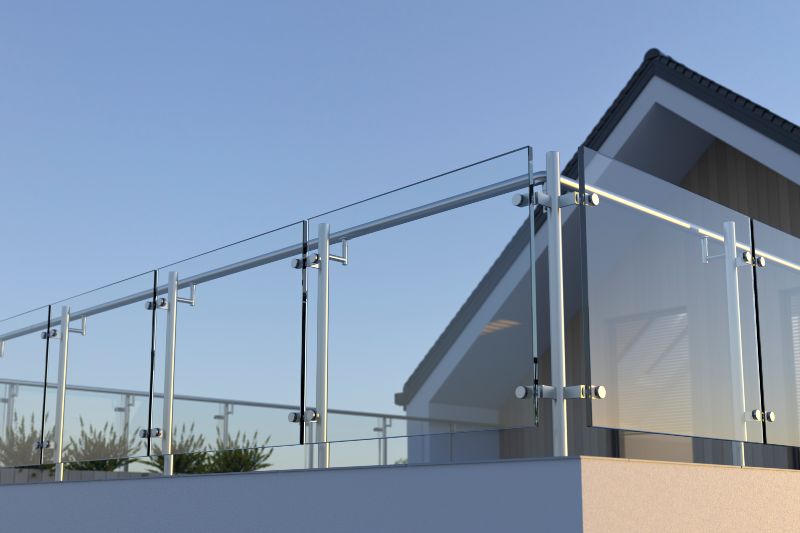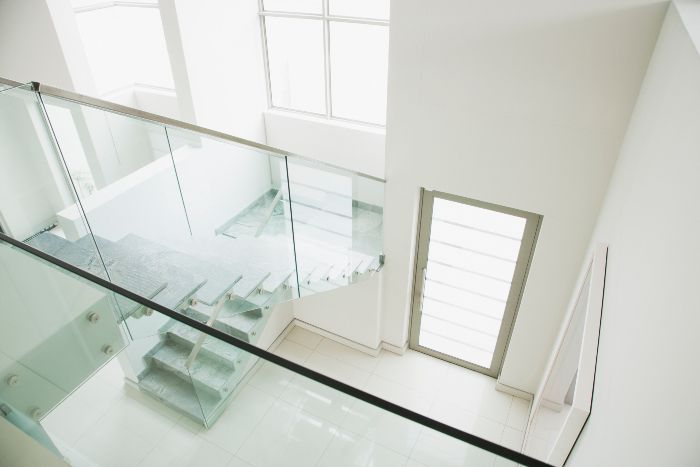Are Glass Balconies Popular in 2024?
Dreaming of a contemporary living space flooded with natural light and breathtaking views? Glass balconies are the perfect solution! This guide dives into the rising popularity of glass balconies, exploring the key benefits they offer and the different types available. From understanding the advantages of tempered and laminated glass to navigating frameless options, you'll gain valuable insights to inform your choice. Safety remains paramount, so we'll investigate the features to ensure glass balconies meet stringent standards. Finally, we'll explore the installation process, highlighting common challenges and best practices. Whether you're an architect seeking modern design elements or a homeowner yearning for an open and inviting space, this comprehensive overview equips you with the knowledge to embrace the trend of glass balconies.
Trends and Popularity of Glass Balconies
Glass balconies are increasingly popular due to their sleek design and clear, open vistas. As more homeowners and architects opt for this modern aesthetic, the demand for glass railings for balconies also sees an upward trend.
Benefits Over Traditional Materials
Glass balconies offer several benefits compared to traditional materials like wood or iron. They provide an unobstructed view, making even small spaces feel larger. Unlike wood, glass doesn't warp or need frequent maintenance. Glass railings for balconies are resistant to corrosion, unlike iron, ensuring longevity and durability. Additionally, they add a contemporary look that's difficult to achieve with other materials.
Increasing Market Demand
The market for glass balconies expands each year. This growth is due to technological advances, making glass stronger and safer. Homeowners seek the balance between safety and design, which glass railings for balconies offer. The demand is not just limited to residential buildings; commercial structures also increasingly feature glass balconies to give a modern, open feel.
The rising trend reflects a shift towards more elegant, low-maintenance, and sustainable building solutions. Glass balconies meet these criteria, making them a popular choice for 2024.

Types of Glass Used for Balconies
Different types of glass are used for balconies, each offering unique benefits. Understanding the differences helps make an informed choice for your glass balcony design.
Tempered vs. Laminated Glass
Tempered and laminated glass options offer distinct advantages for balcony applications. Tempered glass, or toughened glass, is heat-treated to increase its strength. If broken, it shatters into small, blunt pieces, reducing injury risk. It's ideal for balconies that require high safety and durability, especially in residential settings.
Laminated glass consists of two or more layers bonded by an interlayer, typically polyvinyl butyral (PVB). If broken, the interlayer holds the glass shards together, providing a barrier against falling. This type is excellent for added security and noise reduction, making it suitable for residential and commercial balconies.
Frameless Glass Options
Frameless glass options offer an uninterrupted view and a sleek design. These systems use minimal or no vertical supports, giving a clean look while maintaining safety. Structural glass systems rely on thick, sturdy glass as the main support structure. Posted systems use glass clamps or lugs with vertical posts spaced every meter. A hybrid system that minimizes or eliminates vertical supports, called Balconettes, uses sleek connectors for an unobstructed view.
Frameless solutions blend well with modern architectural styles, providing a minimalist aesthetic and maximizing natural light. They are favored for residential and commercial properties, fitting perfectly with the 2024 trend toward clear views and modern aesthetics.
Choosing the right type of glass for your balcony involves considering safety, aesthetics, and maintenance. Both tempered and laminated glass offer reliable options, while frameless glass systems provide a modern, elegant touch suitable for various applications.
Safety Features of Glass Balconies
Safety is crucial when it comes to glass balconies. Modern designs incorporate several features to ensure they meet stringent safety standards.
Durability and Maintenance Concerns
Glass balconies use toughened or laminated glass, which is highly resistant to impacts. This type of glass withstands environmental stresses like wind, temperature changes, and UV exposure. If a panel does break, only that specific panel needs replacement, making maintenance straightforward and cost-effective. The robust railings and support structures meet safety standards, providing peace of mind for homeowners.
Regulation and Compliance
Glass balconies adhere to strict building codes and safety standards. Manufacturers design these systems to comply with local regulations, ensuring they're safe for everyday use. Compliance ensures that the glass and supporting structures provide adequate protection against accidents and increase the overall reliability of the balconies.
By integrating must-have safety features and meeting all regulatory requirements, they offer both style and security for residential and commercial properties.

Installation Process for Glass Balconies
Installing glass balconies involves several steps to ensure safety and aesthetic appeal. Glass railings for balconies provide modern looks and durable strength, and follow these procedures.
Preparing for Installation
Preparation starts with accurate measurements and material selection. Measure the space meticulously to fit glass panels precisely. Based on safety and aesthetic requirements, decide on the type of glass, such as tempered or laminated.
Next, consider the structural support. Engineers review load-bearing capacities to ensure the building can support the glass panels. A sturdy framework, often made of metal or robust composite materials, is necessary.
Common Installation Challenges
While installing glass balconies, professionals encounter common challenges like fitting issues and securing panels. Ensuring the glass fits the balcony dimensions can be tricky, requiring precision cutting.
Securing glass panels firmly is essential for safety. Improper anchoring can lead to instability, so using high-quality fixtures and following industry standards like BS6180:2011 is crucial.
Weather can also pose challenges. Working in adverse weather conditions may affect installation, so planning for optimal weather can mitigate delays and complications.
Conclusion
Glass balconies offer a blend of modern aesthetics and functional benefits, making them an attractive choice for contemporary living spaces. Their ability to provide unobstructed views and enhance safety through advanced materials like tempered and laminated glass sets them apart. With frameless designs adding a sleek touch, glass balconies elevate the visual appeal and ensure robust safety features. Adhering to safety standards and proper installation techniques is essential for maximizing their potential. As more homeowners and architects embrace these innovative structures, glass balconies are set to become a staple in modern architectural design.


